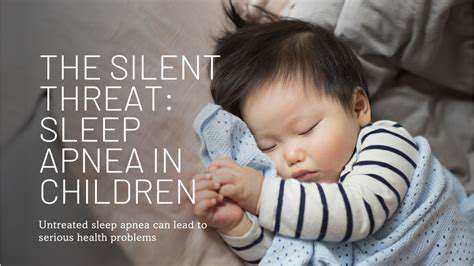Identifying the Most Common Sleep Disorder: Key Facts
Aug 01, 2025 / zsfcdn103/
Insomnia, a prevalent sleep disorder, is characterized by persistent difficulty falling asleep, staying asleep, or experiencing restful sleep. This chronic sleep problem can be caused by various factors, including stress, anxiety, lifestyle choices, underlying medical conditions, and certain medications. People experiencing insomnia often report feelings of fatigue, irritability, and difficulty concentrating during the day, highlighting the significant impact on overall well-being.
The severity of insomnia can vary greatly from person to person, and it's crucial to seek professional help for diagnosis and treatment if the problem persists. A thorough evaluation can help determine the underlying cause and develop a personalized approach to address the issue effectively.
Sleep Apnea: Disruptions in Breathing During Sleep
Sleep apnea is a serious sleep disorder characterized by pauses in breathing during sleep. These pauses can last for a few seconds to several minutes and can occur repeatedly throughout the night. The most common type, obstructive sleep apnea, occurs when the airway becomes blocked, preventing airflow to the lungs. This disruption in breathing can lead to decreased oxygen levels in the blood, which can have serious health consequences, including cardiovascular issues, high blood pressure, and an increased risk of stroke.
Narcolepsy: Excessive Daytime Sleepiness
Narcolepsy is a chronic neurological disorder characterized by excessive daytime sleepiness. Individuals with narcolepsy may experience sudden, irresistible urges to sleep during the day, regardless of the situation or activity. Often accompanied by cataplexy, a sudden loss of muscle tone, narcolepsy can significantly disrupt daily life. Understanding the symptoms and seeking appropriate medical care is essential to manage this condition and improve the quality of life for those affected.
Restless Legs Syndrome: An Uncomfortable Sensation
Restless legs syndrome (RLS) is a neurological disorder that causes an irresistible urge to move the legs. This urge is often accompanied by unpleasant sensations, such as tingling, crawling, or burning in the legs. These sensations are often worse in the evening or at night, making it difficult to fall asleep. RLS can significantly impact sleep quality and lead to daytime fatigue, difficulty concentrating, and mood disturbances. Identifying the cause of RLS and implementing appropriate treatment strategies are crucial for managing symptoms and improving sleep patterns.

Sleep Apnea: The Silent Threat to Sleep

Understanding Sleep Apnea
Sleep apnea is a sleep disorder characterized by pauses in breathing during sleep. These pauses can last for a few seconds to a few minutes, and they can occur repeatedly throughout the night. This disruption of breathing can significantly impact the quality and quantity of sleep, leading to a wide range of health problems. Many individuals with sleep apnea are often unaware of their condition, as the symptoms can be subtle or even masked by other health issues.
The most common type of sleep apnea is obstructive sleep apnea (OSA), which occurs when the soft tissues in the back of the throat relax and collapse during sleep, blocking the airway. This blockage prevents air from flowing into the lungs, causing the pauses in breathing. Other types of sleep apnea exist, but OSA is the most prevalent.
Symptoms and Diagnosis
Recognizing the symptoms of sleep apnea is crucial for early diagnosis and treatment. Common symptoms include loud snoring, gasping or choking sounds during sleep, daytime sleepiness, morning headaches, and difficulty concentrating during the day. These symptoms can vary in severity, and some individuals may experience only a few, while others may exhibit more pronounced and frequent issues.
Diagnosing sleep apnea typically involves a combination of medical history review, physical examination, and sleep studies. A sleep study, also known as a polysomnography, monitors various physiological parameters during sleep, including brain waves, eye movements, breathing patterns, and oxygen levels in the blood. This comprehensive data helps healthcare professionals determine the severity and type of sleep apnea.
Causes and Risk Factors
Several factors can contribute to the development of sleep apnea. Obesity is a significant risk factor, as excess weight can lead to the accumulation of fat around the neck and throat, narrowing the airway. Certain medical conditions, such as high blood pressure and diabetes, can also increase the risk of developing sleep apnea. Genetics also plays a role, as individuals with a family history of sleep apnea are more likely to experience the condition. Lifestyle choices, such as smoking and excessive alcohol consumption, can also contribute to the problem.
Age and gender are also associated with the likelihood of experiencing sleep apnea, although it can affect people of any age. Certain medications can also be a contributing factor to sleep apnea, and it is always best to consult a medical professional for further details.
Treatment and Management
Effective treatment options are available for sleep apnea, and the most suitable approach depends on the severity of the condition. Weight loss is often recommended for individuals with sleep apnea who are overweight or obese. Continuous positive airway pressure (CPAP) therapy is a commonly used treatment, delivering a gentle stream of air pressure to keep the airway open during sleep. Other treatments, such as oral appliances and surgery, may also be considered in certain cases. Following a healthy lifestyle, including regular exercise and a balanced diet, is important in managing sleep apnea and improving overall health.
Proper management of sleep apnea is critical for improving sleep quality and reducing the risk of serious health complications, such as heart disease, stroke, and type 2 diabetes. Regular check-ups with a healthcare provider are essential for monitoring the condition and adjusting treatment plans as needed.
Narcolepsy: The Unpredictable Sleep Disorder
Understanding Narcolepsy
Narcolepsy is a chronic neurological disorder characterized by excessive daytime sleepiness and a disruption of normal sleep-wake cycles. It's a condition that significantly impacts a person's ability to function throughout the day, affecting their concentration, productivity, and overall quality of life. Understanding the intricacies of narcolepsy is crucial for effective management and support.
While the exact cause of narcolepsy remains unknown, it's believed to involve a complex interplay of genetic and environmental factors. Research suggests that an imbalance in certain brain chemicals, particularly hypocretin, plays a critical role in the development of this disorder.
Symptoms of Narcolepsy
The symptoms of narcolepsy can vary significantly from person to person, and they often manifest gradually over time. Common symptoms include excessive daytime sleepiness, characterized by an overwhelming urge to sleep during the day, even for short periods. This can lead to difficulty concentrating, memory problems, and impaired motor skills.
Another key symptom is cataplexy, a sudden loss of muscle tone triggered by strong emotions like laughter, anger, or surprise. This can range from a slight weakness in the muscles to a complete collapse. Hallucinations, particularly hypnagogic hallucinations (occurring while falling asleep) and hypnopompic hallucinations (occurring while waking up), are also frequently reported by individuals with narcolepsy.
Diagnosis and Evaluation
Diagnosing narcolepsy often requires a comprehensive evaluation by a sleep specialist. The process typically involves a detailed medical history, a physical examination, and a sleep study, often referred to as a polysomnogram. This test monitors various physiological functions during sleep, such as brain waves, eye movements, and muscle activity, to identify any abnormalities.
During the evaluation, the sleep specialist will consider the patient's reported symptoms, including the duration and frequency of excessive daytime sleepiness, cataplexy episodes, and any other related experiences. This comprehensive assessment helps distinguish narcolepsy from other sleep disorders or medical conditions.
Treatment Options for Narcolepsy
Fortunately, narcolepsy can be effectively managed with a combination of lifestyle adjustments, medications, and behavioral therapies. Stimulant medications are commonly prescribed to help regulate alertness and reduce daytime sleepiness. These medications can help improve concentration and overall functioning.
Other medications may be used to manage cataplexy and other related symptoms. Behavioral strategies, such as maintaining a regular sleep schedule, practicing good sleep hygiene, and engaging in regular physical activity, can also play a significant role in managing the condition.
Living with Narcolepsy
Living with narcolepsy requires a proactive and supportive approach. Individuals with narcolepsy must learn to adapt their daily routines to accommodate their sleep needs and potential symptoms. This may involve scheduling frequent short naps, adjusting work or school schedules, and ensuring adequate rest at night.
Seeking support from healthcare professionals, support groups, and family members can significantly improve the quality of life for individuals with narcolepsy. Education about the disorder is essential for understanding its complexities and developing coping mechanisms.
The Importance of Support and Awareness
Creating an environment of understanding and support is crucial for individuals with narcolepsy. Education about the condition is vital for both patients and their loved ones. Educating the public about narcolepsy can help reduce stigma and promote a better understanding of the challenges faced by individuals living with this sleep disorder.
By fostering awareness and promoting empathy, we can create a more inclusive environment that supports individuals with narcolepsy in leading fulfilling lives. This includes emphasizing the importance of early diagnosis, appropriate treatment, and ongoing support.